20 Beers That Should Come With a Warning Label
June 14, 2018 by Steven M. PetersBeer, historians tell us, is the oldest alcoholic beverage in the world. Some believe that it was known even to the cavemen.
Beer is made from fermented grains of various kinds, usually malted barley these days, often with flavoring agents added — everything from the traditional hops to pumpkin spice.
Fermentation results from the interaction of yeast and sugar, producing alcohol and C02 (carbonation). Brewers have various ways of controlling the alcohol level, and they can make beer containing almost none or quite a bit. Alcohol-free beer measures less than 0.05% ABV — alcohol by volume, which means the portion of the liquid that is pure alcohol — while conventional high-proof beers can easily climb to 9% or 10%. The average is 4.5%.
In recent years, though, ABVs have been inching higher. Traditional beer can only get so strong. If the alcohol level gets too high during fermentation, it kills the yeast, bringing the process to a halt. But earlier in the century, some brewers started using super-strong yeasts in an effort, largely successful, to make beer that was as strong as wine — typically measuring between 11% and 16%.
Strong yeasts aren’t the only way to make strong beer. A traditional Bavarian beer style called Eisbock uses a process called cryoconcentration, or fractional freezing, to increase ABV up to around 13%. When beer is subjected to very cold temperatures, the water it contains freezes before the alcohol. Remove the ice — eis in German — from the liquid, and what remains is thus stronger.
In 2010, a Belgian brewery called De Struise decided to take the process further, manipulating the freezing process until it managed to produce a beer with an alcohol level of 26%. Other brewers responded, and the race was on — culminating, at least for now, in a beer with an ABV of 67.5%, higher than that of most liquors.
Compiling a list of the strongest beers in the world is tricky. Craft brewers tend to make specialty beers in miniscule quantities, and while some popular brews are produced anew every year, some appear once and then disappear into legend. ABVs don’t necessarily remain constant from one bottling to the next, either. And there are new ones appearing all the time.
Some of the beers listed here are still in production and some are gone either permanently or at least for now, but none are easy to find. Collectors and specialty websites sometimes sell beers that are no longer produced, and they tend to age well, so the fact that they’re a few years old isn’t necessarily a concern.
It’s also important to remember about the world’s strongest beers, especially the ones over 18% or so, that they usually don’t taste much like beer. They lose carbonation as they grow in ABV and are often sweet but also harsh. They can also be deceptively dangerous, with alcohol contents approaching those of vodka or whisky. You’d be hard-pressed, and ill-advised, to drink a whole bottle of most of these. They’re beers for sipping and for talking about, not for quenching your thirst or accompanying a burger.
Click here to see the world’s 20 strongest beers.
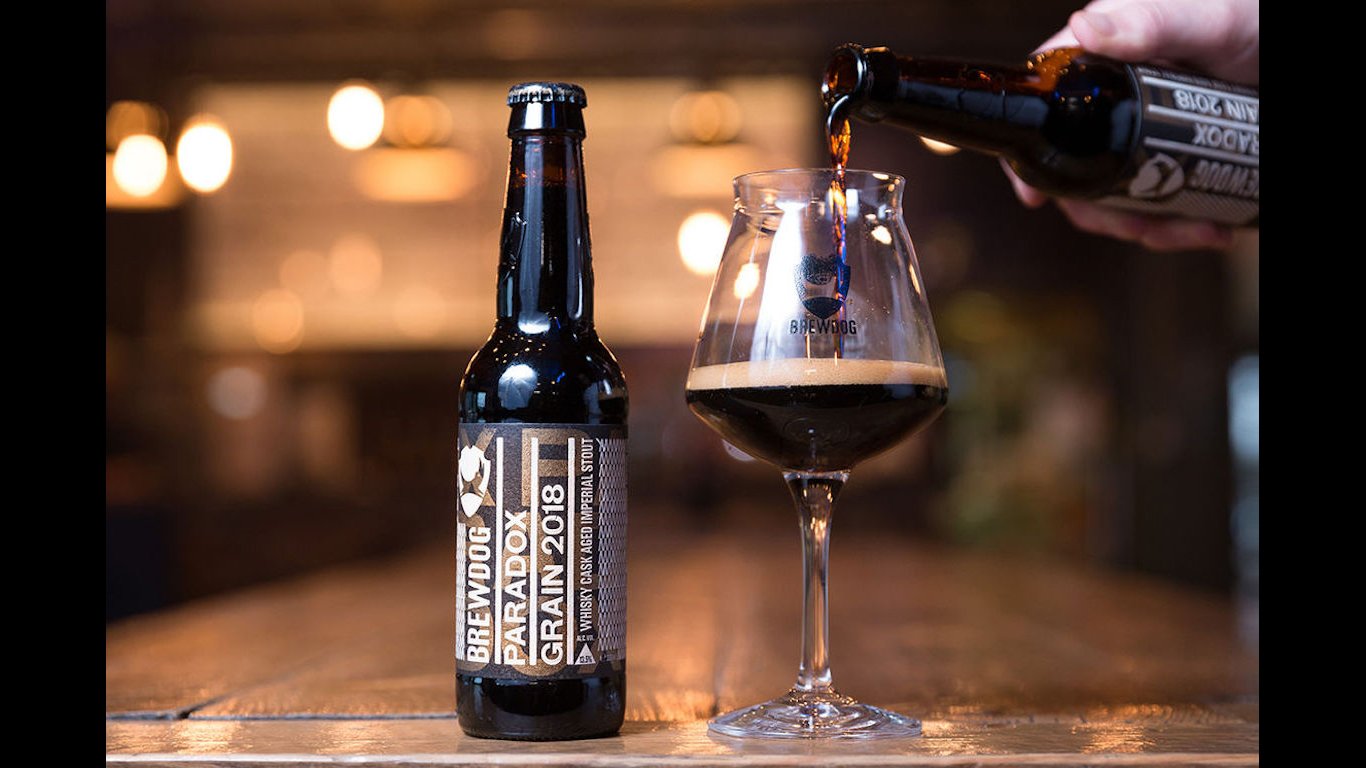
20. Paradox Grain 2018
> Alcohol by Volume (ABV): 13.5%
> Brewery: BrewDog (Scotland; Ohio)
An imperial stout — a rich, toasty style of beer — made by an innovative brewery, the latest edition of Paradox Grain was aged for a year and a half in grain (as opposed to malt) whisky casks. It’s thick and dark, with flavors of chocolate and coffee predominating.
[in-text-ad]
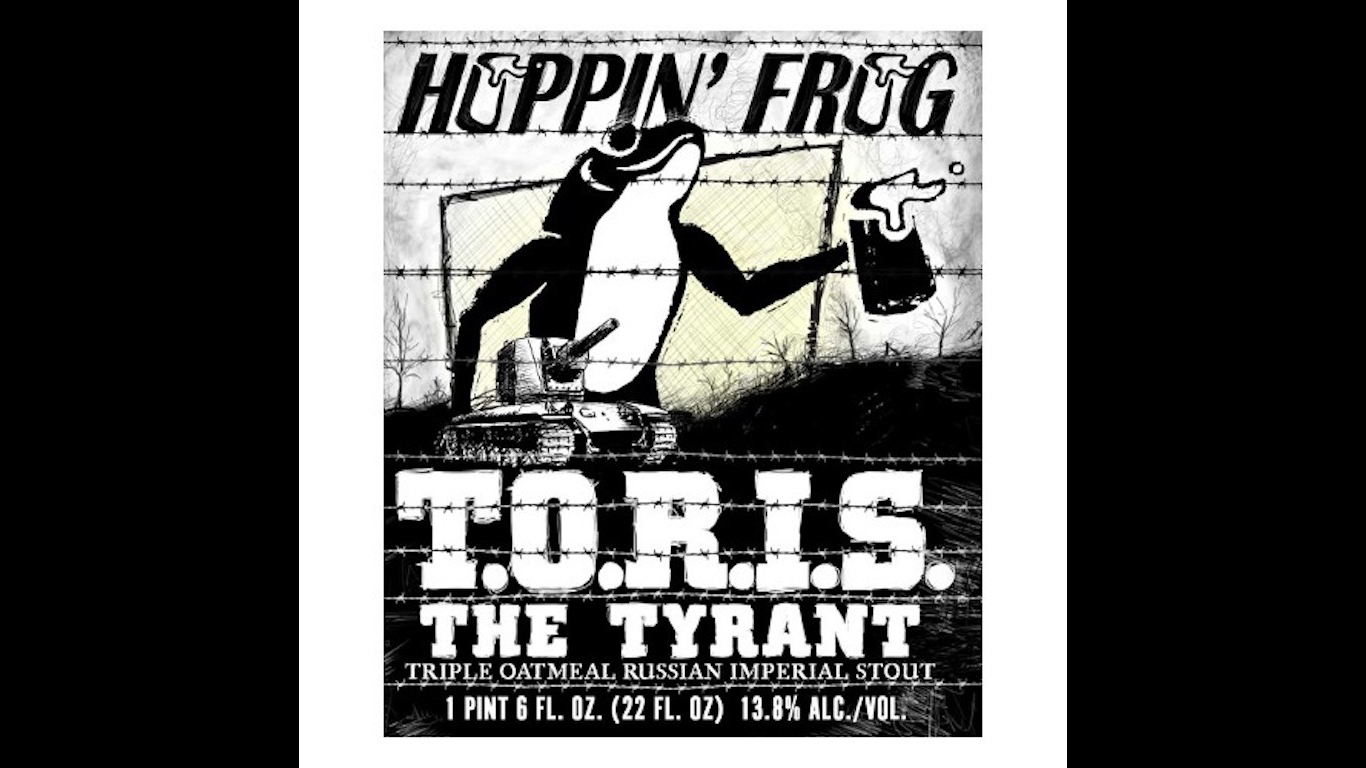
19. T.O.R.I.S The Tyrant
> ABV: 13.8%
> Brewery: Hoppin’ Frog Brewery (Ohio)
T.O.R.I.S. stands for Triple Oatmeal Russian Imperial Stout. Russian imperial stout was first concocted by a London brewery in the 18th century for shipment to the Russian court. Oatmeal stout is one in which oats — which add an additional hint of bitterness — have been added to the base grain. “Triple” just reinforces the idea that this is a strong brew.
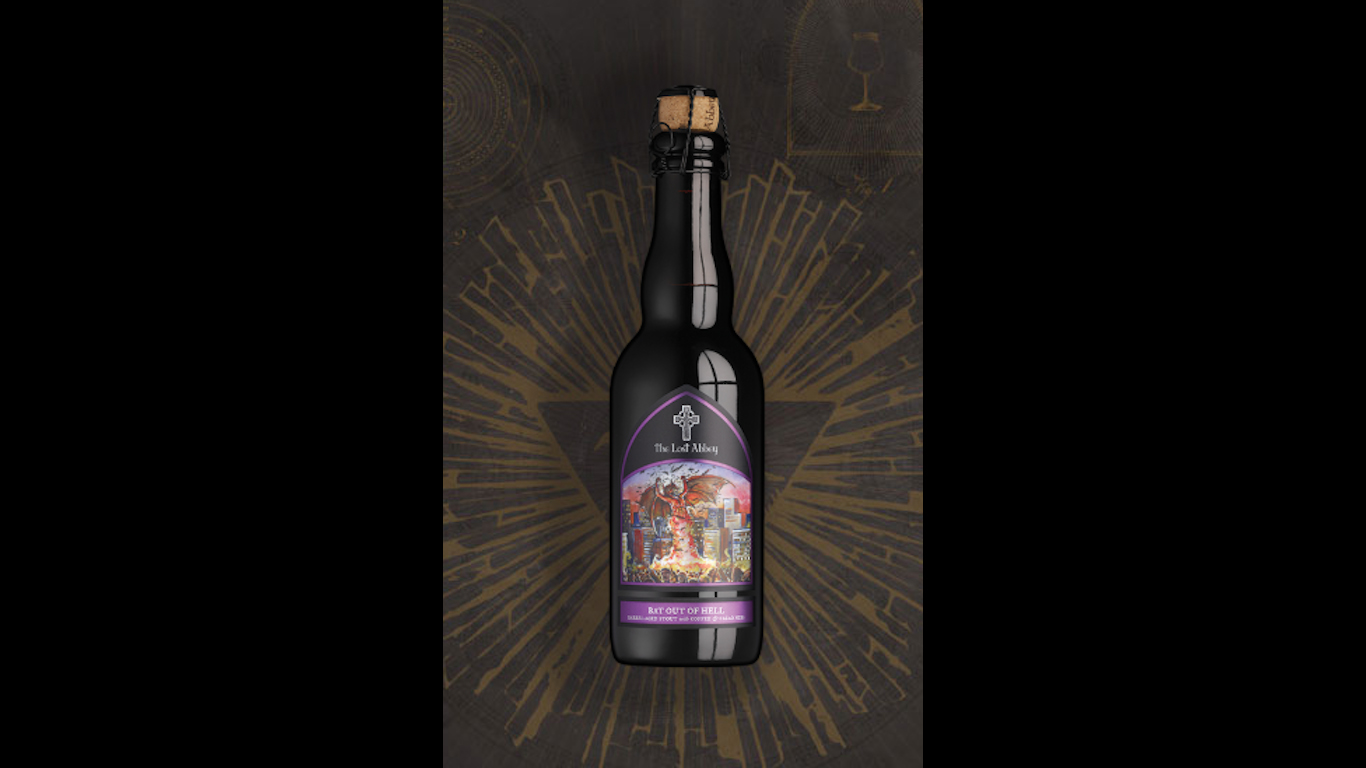
18. Bat Out of Hell
> ABV: 14%
> Brewery: Lost Abbey (California)
Some beers taste like chocolate and/or coffee. This one — based on a slightly weaker (11% ABV) Lost Abbey imperial stout and aged in bourbon barrels — is actually flavored with cacao nibs and coffee beans.
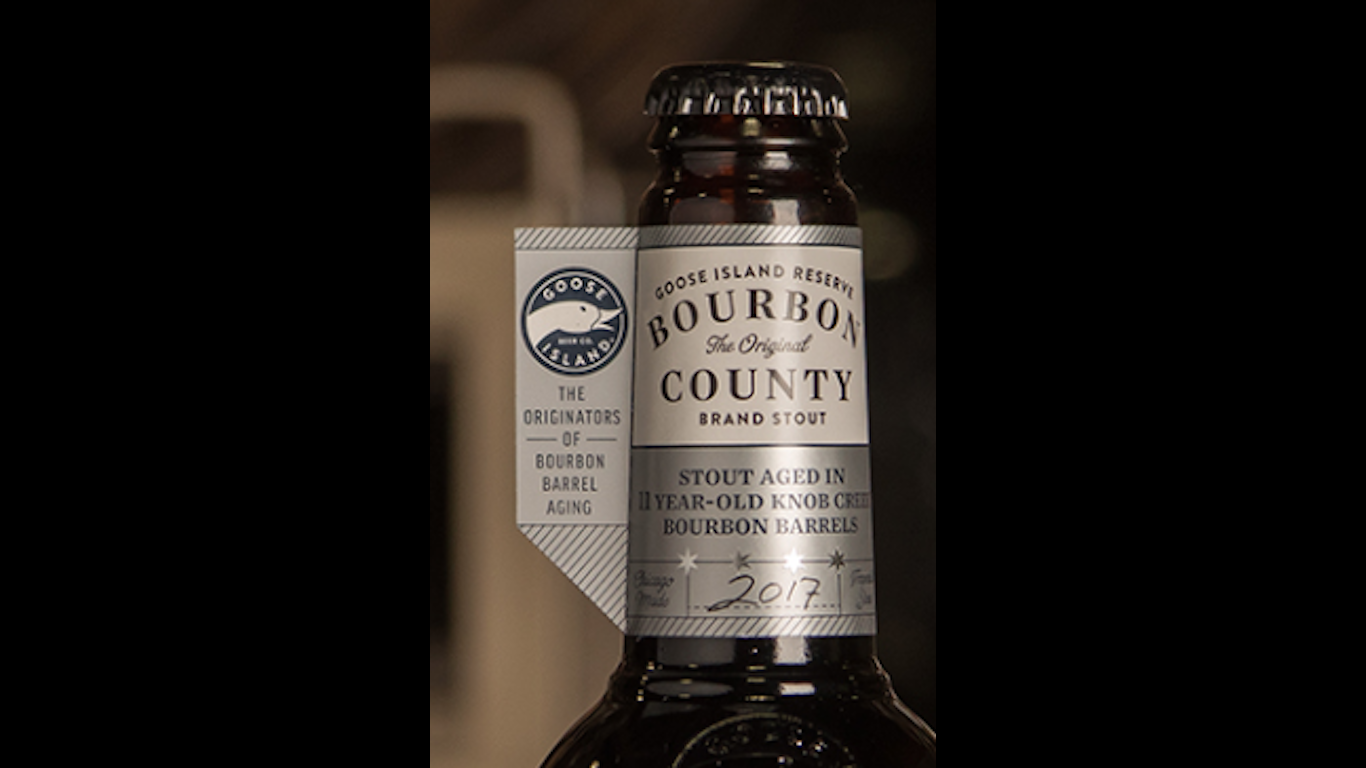
17. Bourbon County Brand Stout Reserve 2017
> ABV: 14.8%
> Brewery: Goose Island (Illinois)
After Goose Island brewmaster Greg Hall met the legendary Kentucky distiller Booker Noe of Jim Beam some years back, Noe sent him four of his best barrels, establishing a decades-long collaboration between brewer and distiller. One of its latest expressions is this hearty stout, with its notes of caramel and fruit, aged in casks that once contained Noe’s small-batch Knob Creek whiskey.
[in-text-ad-2]
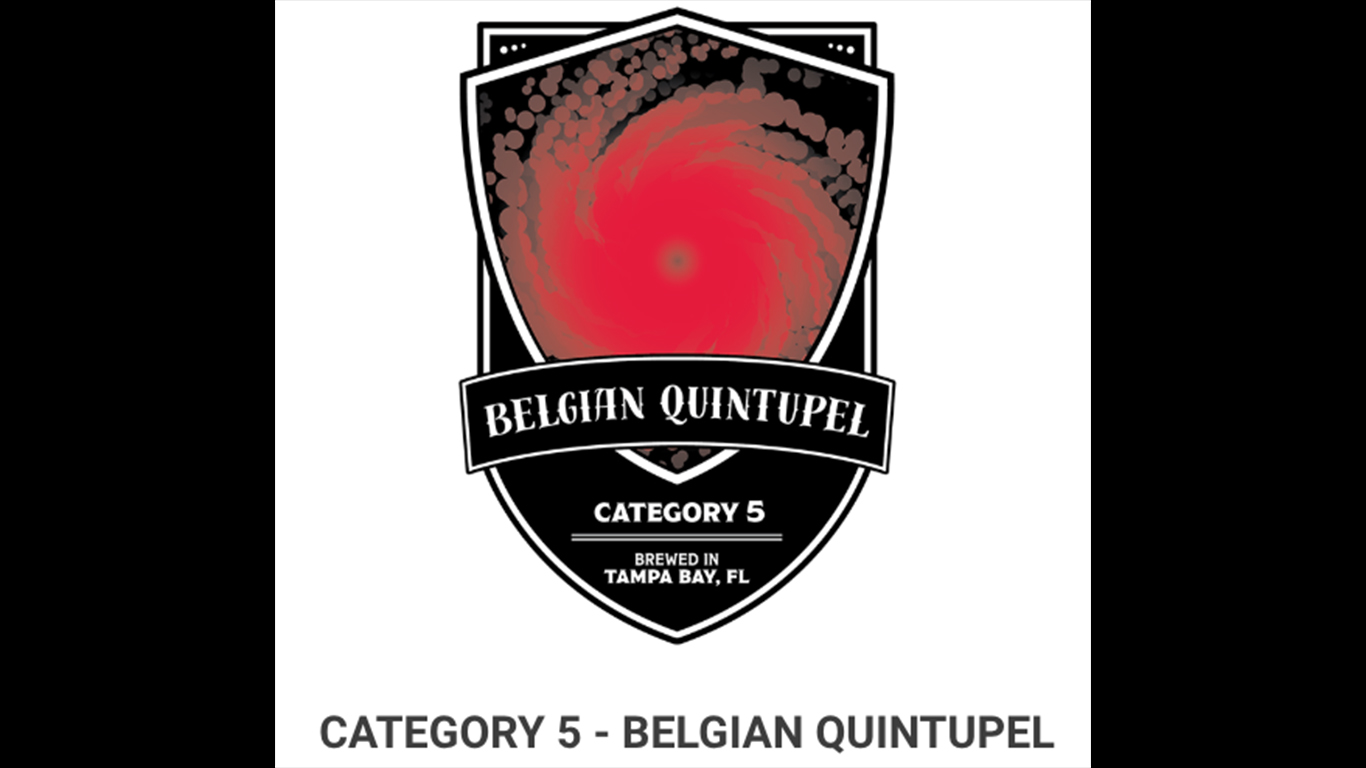
16. Category 5 Belgian Quintupel
> ABV: 15%
> Brewery: Big Storm (Florida)
Available only in the brewery’s three Florida taprooms, this velvety Belgian-style beer, aged in French and Hungarian oak chardonnay barrels, offers spice and hints of beeswax and honey, with a noticeable alcohol kick.
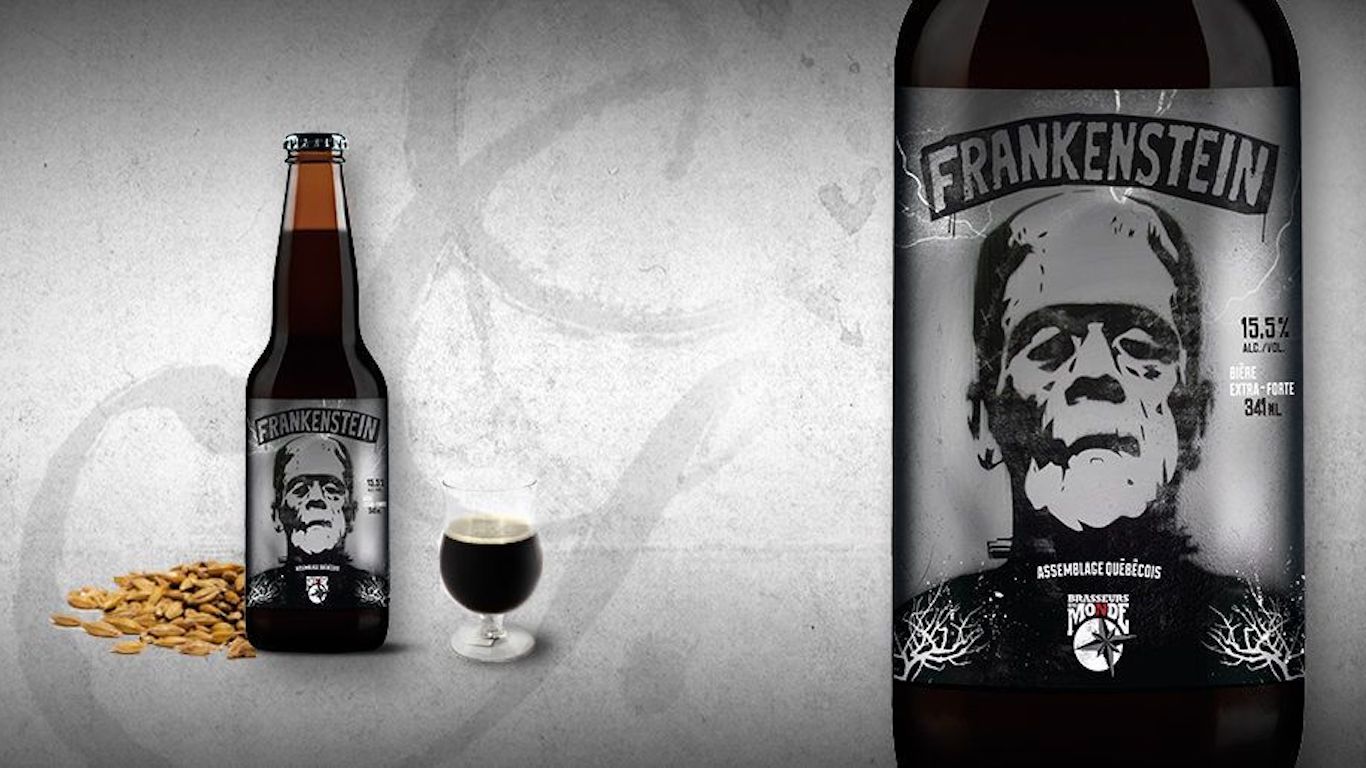
15. Frankenstein
> ABV: 15.5%
> Brewery: Brasseurs du Monde (Canada)
Caramel and vanilla come through in this sweet, black-hued, lightly carbonated ale, blended from a number of the brewery’s other beers that were aged in barrels of various kinds.
[in-text-ad]
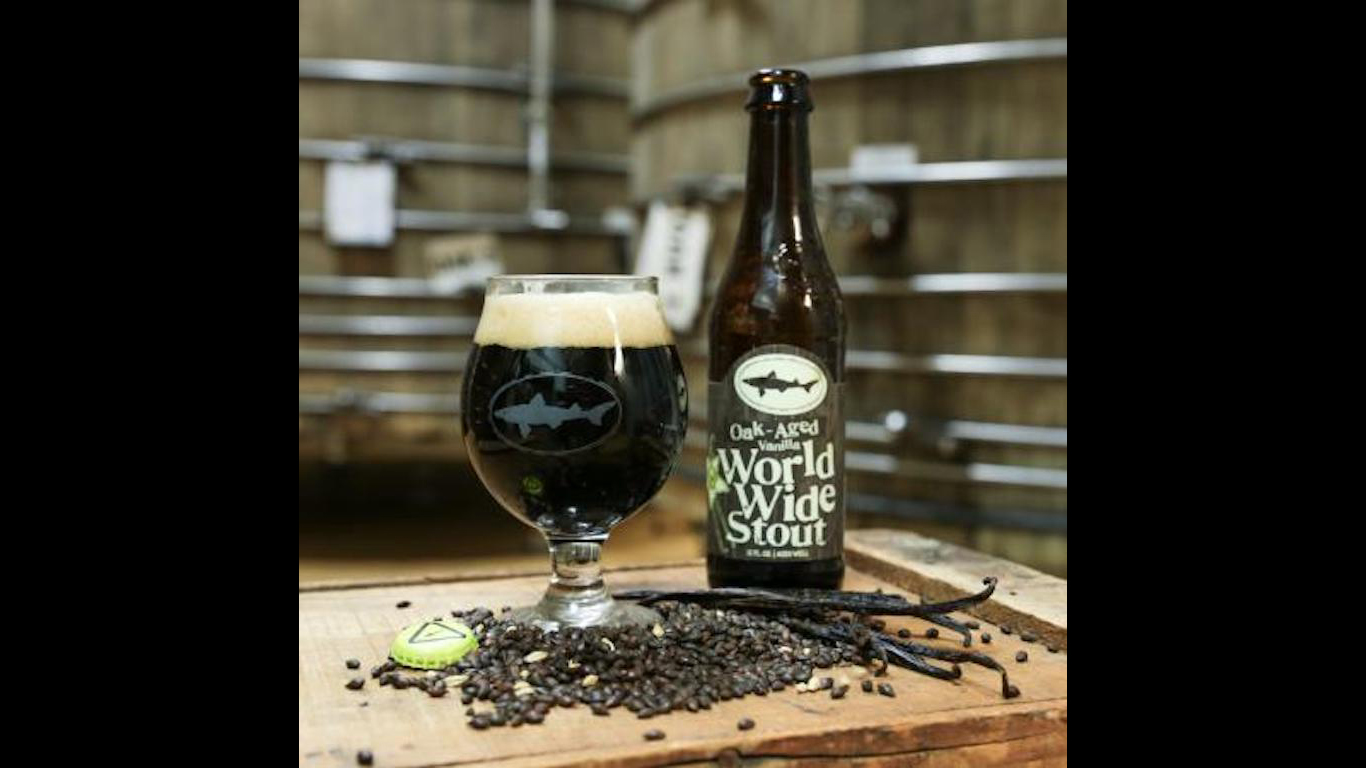
14. Oak-Aged Vanilla World Wide Stout
> ABV: 16%
> Brewery: Dogfish Head (Delaware)
Like wines, a lot of beers pick up a vanilla flavor from the vanillin compound in the oak casks they’re aged in, but this one has had actual vanilla beans macerating in it, adding to its toasty sweetness.
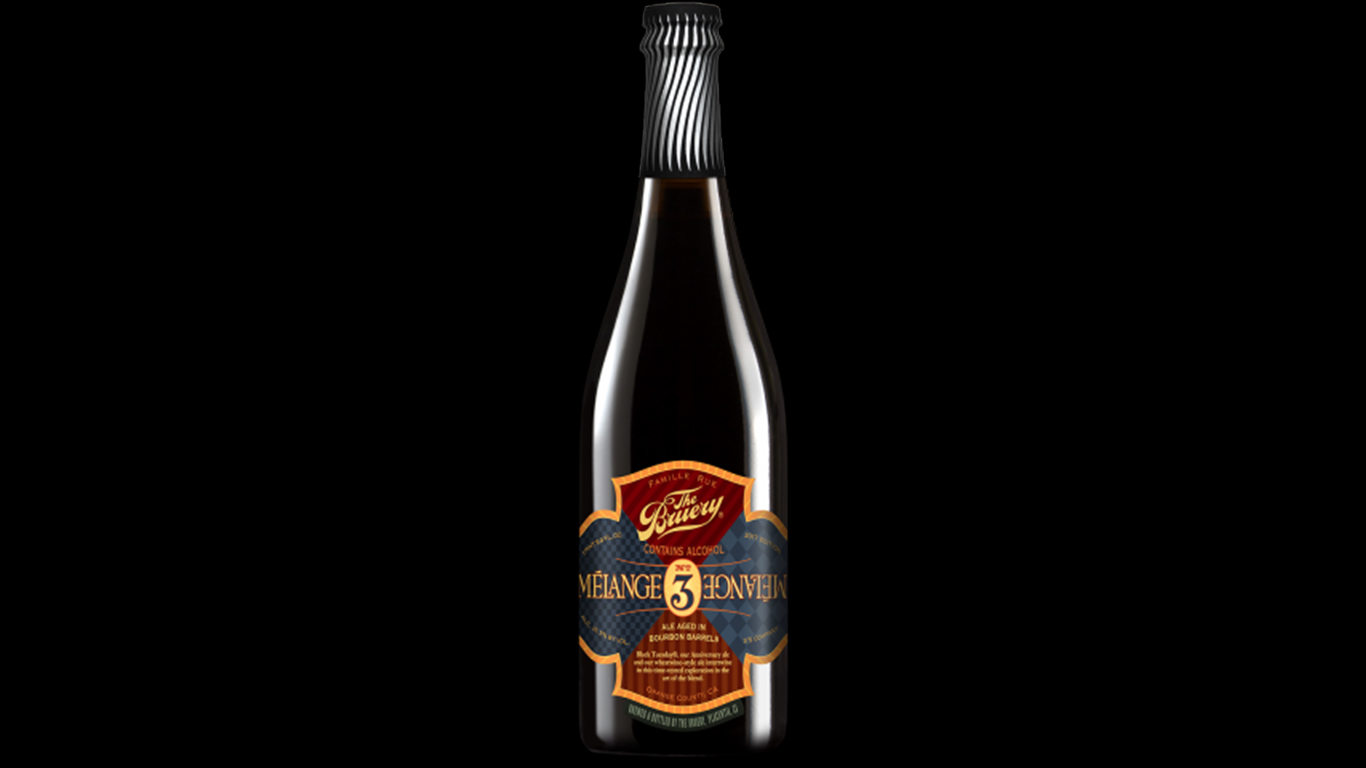
13. Melange No. 3
> ABV: 16.3%
> Brewery: The Bruery (California)
Blended from three other beers — an imperial stout, a particularly dark and malty variety of “old ale,” and a wheat wine (an American-invented style made with a large proportion of malted wheat) — this heady brew is more delicate in flavor than you’d expect, with pronounced sweetness and a fruit-filled finish.
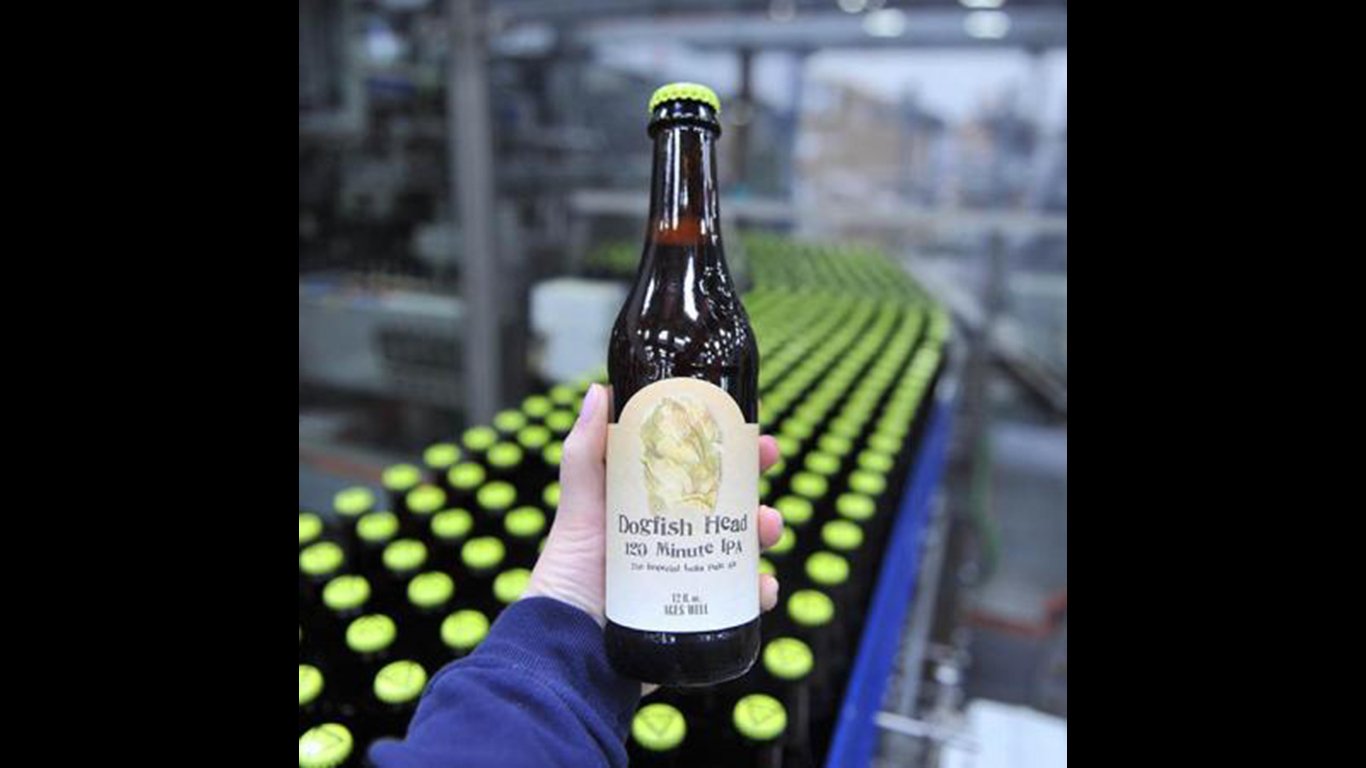
12. 120 Minute IPA
> ABV: 18%
> Brewery: Dogfish Head (Delaware)
Boiled for two hours, hence its name, to concentrate its bitter hoppy flavor, this is a complex and flowery beer. Its mouth-puckering intensity demands that it be savored slowly.
[in-text-ad-2]
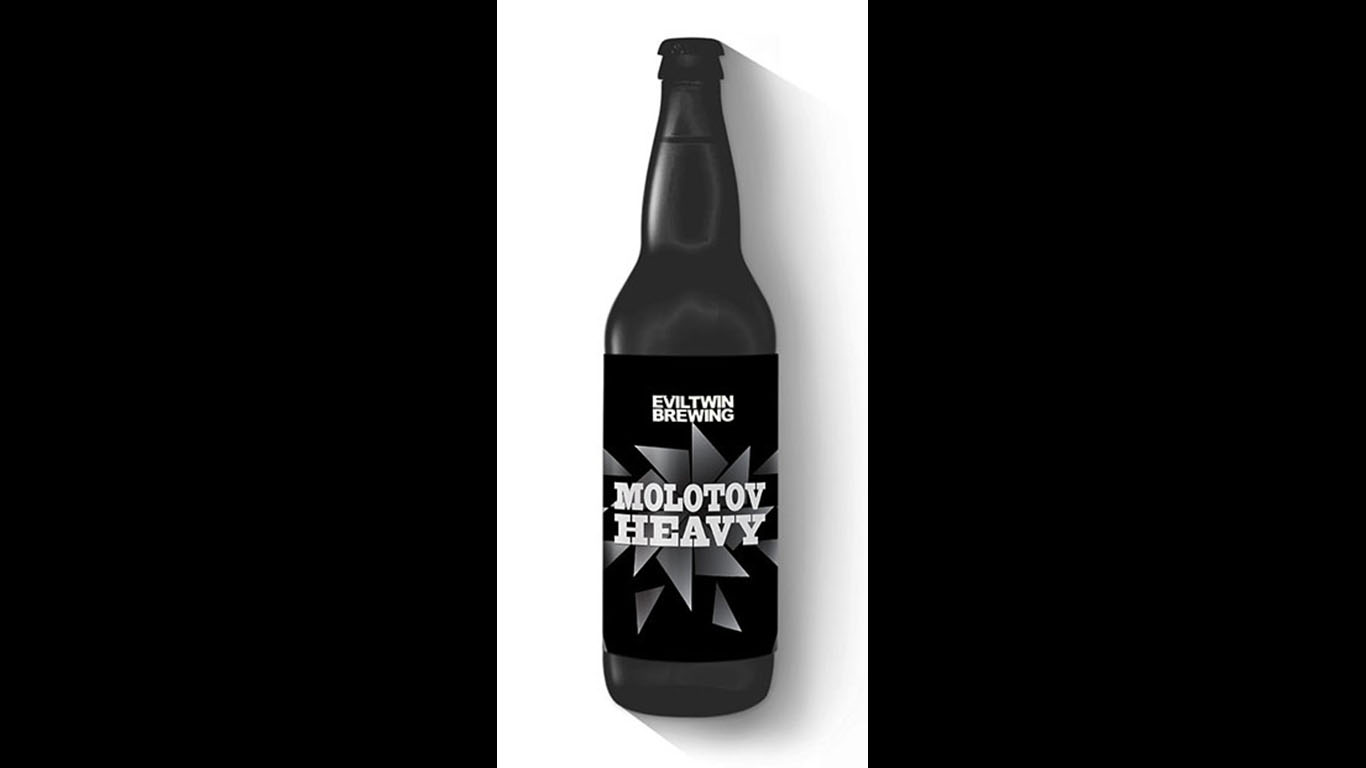
11. Molotov Heavy
> ABV: 18%
> Brewery:> Evil Twin (Denmark, New York, and South Carolina)
Murky reddish-brown in color, this beer is a collaboration between a respected South Carolina brewery and Copenhagen- and Brooklyn-based Evil Twin. It’s dense and piney, with plenty of hops and some alcoholic hotness. Evil Twin describes it as “by far one of the most anti-authoritative beers ever made.”
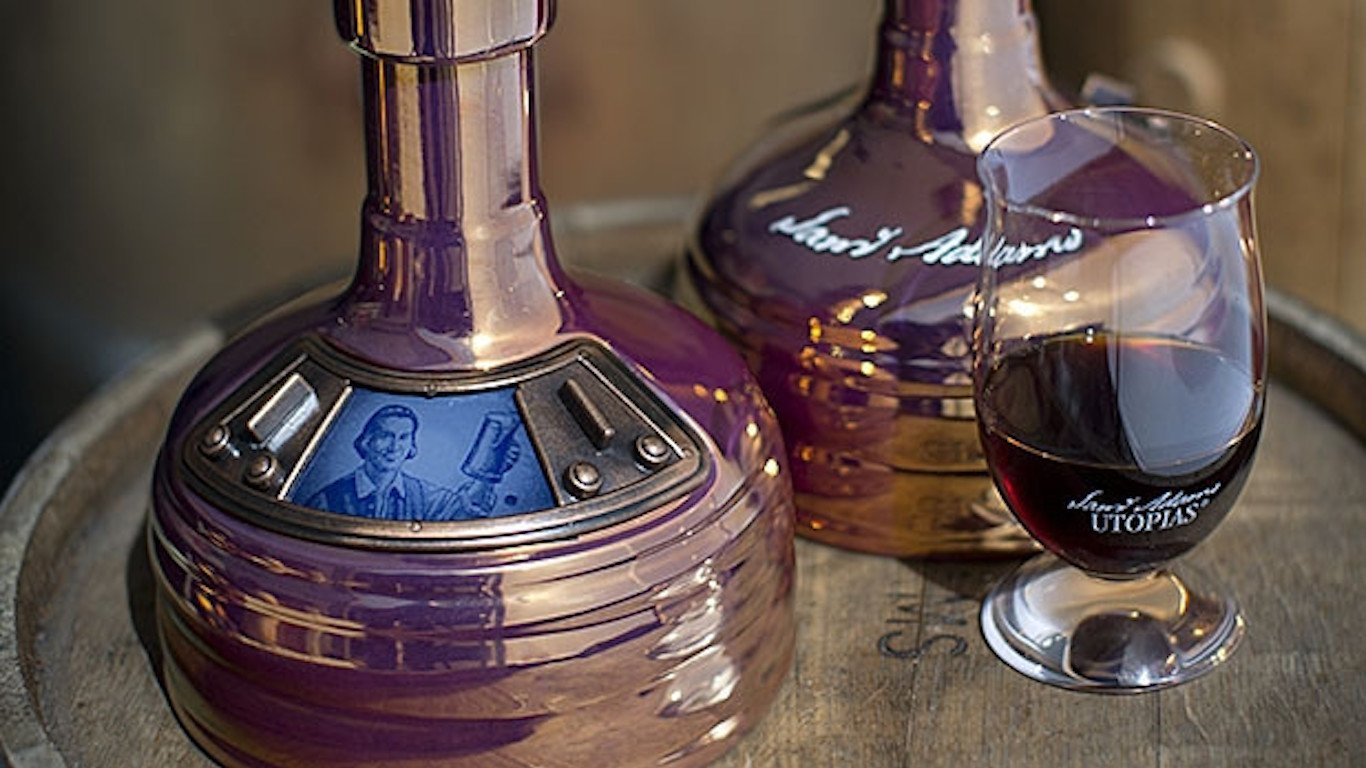
10. Utopias
> ABV: 22%
> Brewery: Samuel Adams (Massachusetts)
This heady specialty beer comes in a container with the approximate shape and coppery gold color of a spirits still, offering a hint to drinkers that what’s inside tastes more like low-proof malty whisky than beer. Smokey and dark brown, with suggestions of maple syrup, which it actually contains, and dried fruit, this latest version of Utopias is blended from earlier iterations — some as much as 24 years old. It is aged in wood of different kinds, including barrels that once contained Scandinavian aquavit and moscato wine. It is almost certainly the highest-alcohol beer that isn’t made by freezing. Instead, the brewery credits the use of what it calls “ninja yeast.”
[in-text-ad]
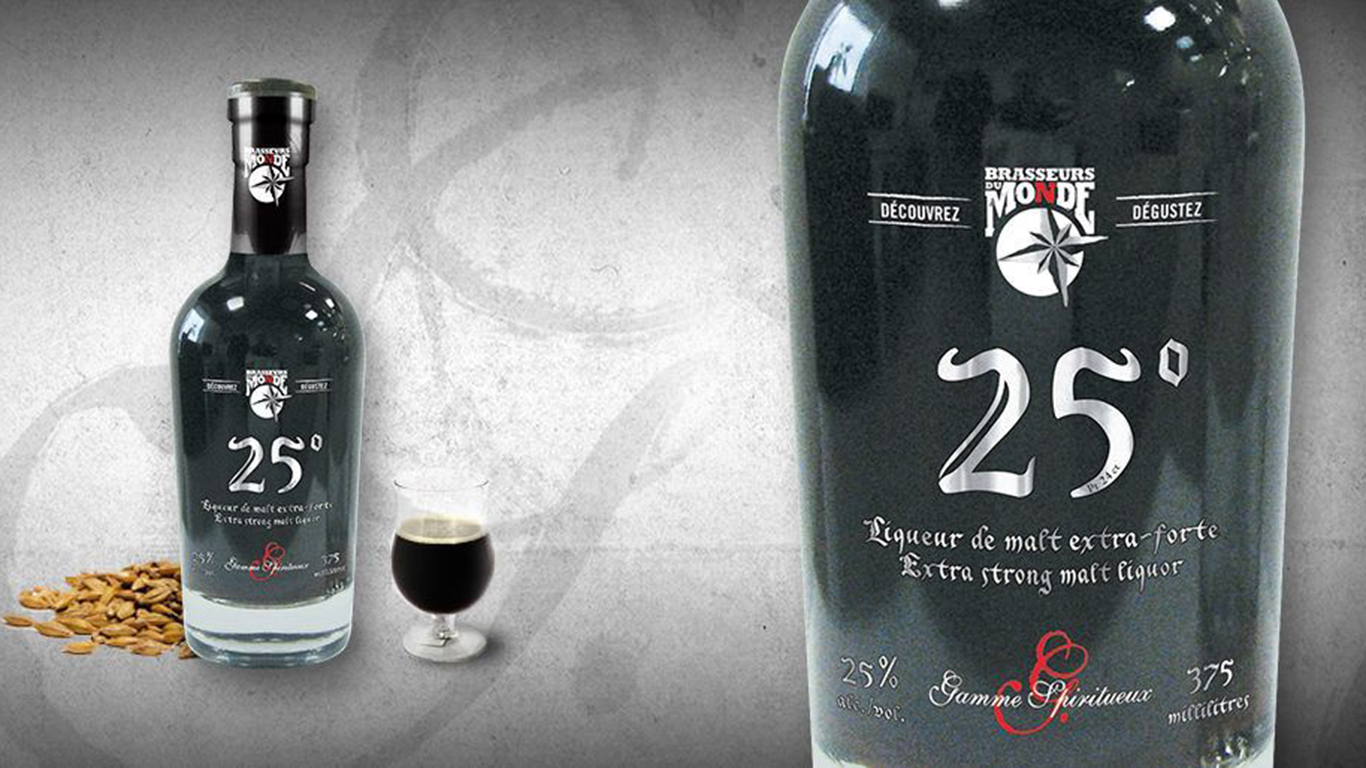
9. 25 Degrés
> ABV: 25%
> Brewery: Brasseurs du Monde (Canada)
This dark, flat, concentrated brew, with its flavors of dried fruit and caramel and its alcoholic bite, was produced — like all the super-high-alcohol beers that follow — through the process of cryoconcentration (freezing the beer to reduce the water content, thus concentrating the alcohol).
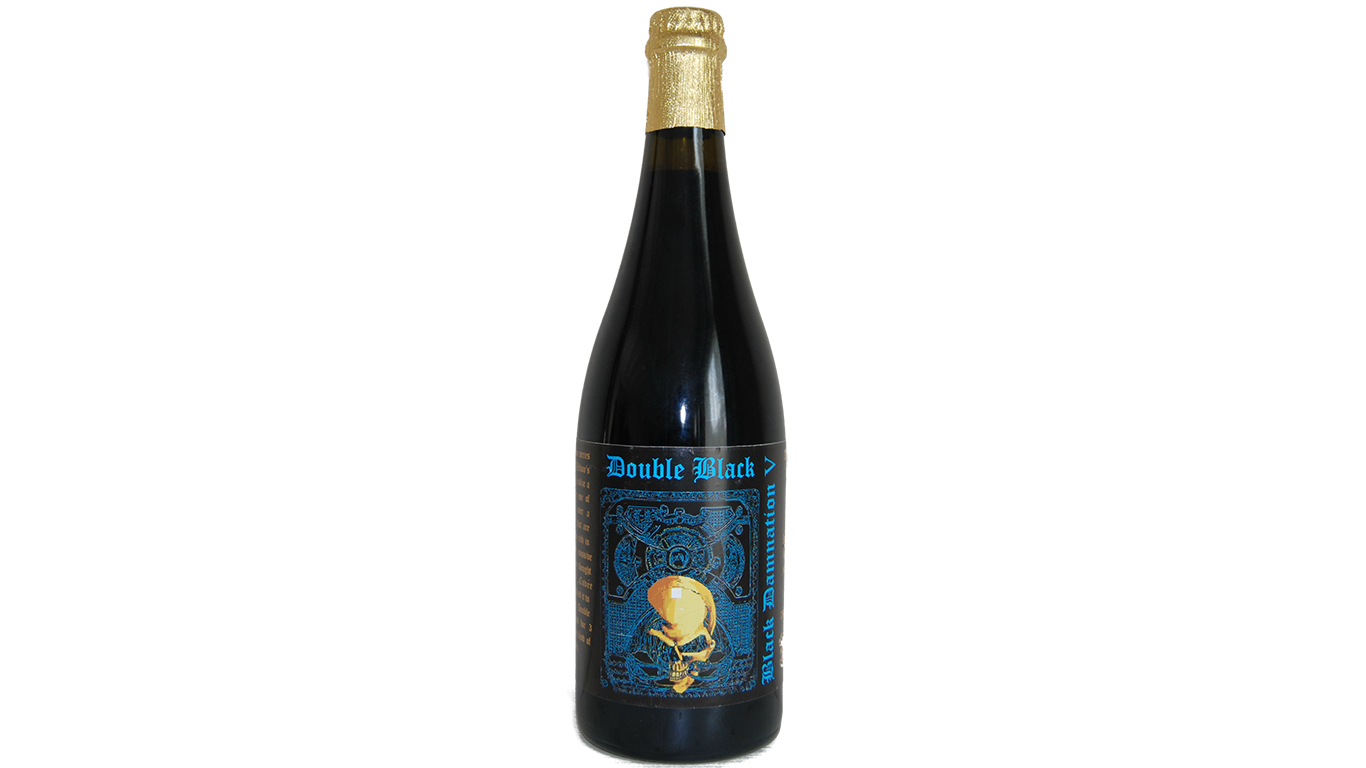
8. Double Black
> ABV: 26%
> Brewery: De Struise (Belgium)
Double Black is a doubly concentrated — through freezing — version of the brewery’s Cuvée Delphine, an imperial stout aged in Four Roses bourbon barrels. Thick and black, it has a bitter, burnt-toast character its fans find irresistible.

7. Schoppe XXL
> ABV: 27.6%
> Brewery: Schoppe / Südstern (Germany)
Produced at Schoppe’s Südstern brewery, this beer set a world record for ABV when it was first released in the early years of this century. Very dark and syrupy, but somehow not cloyingly sweet, it has a baked-apple character and an alcoholic bite.
[in-text-ad-2]
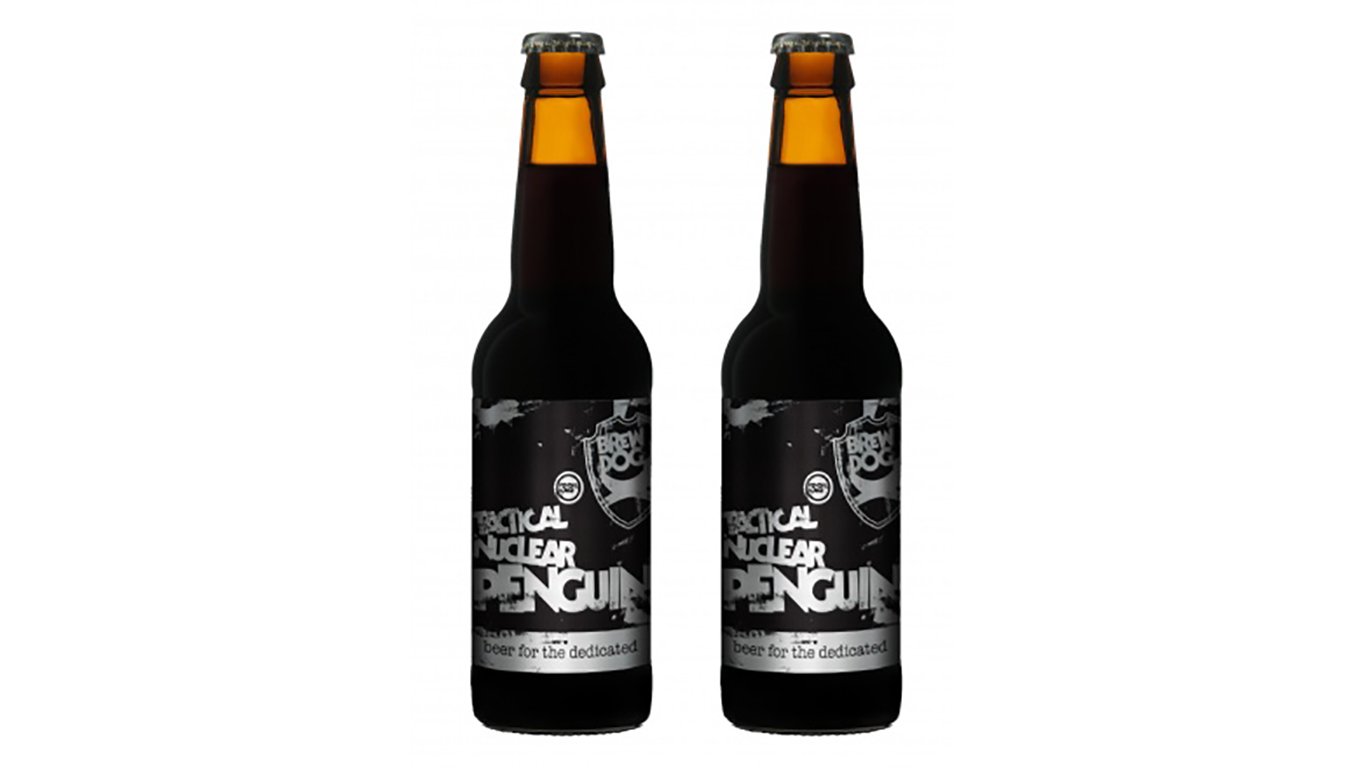
6. Tactical Nuclear Penguin
> ABV: 32%
> Brewery: BrewDog (Scotland; Ohio)
Aged in Scotch casks and frozen three times, this smoky, chocolatey monster robbed Schoppe XXL of its “world’s strongest” title, and is generally credited with having kicked off the strong-beer competition some brewers have been engaged in recently. The brewery suggests sipping it slowly “with an air of aristocratic nonchalance in exactly the same manner that you would enjoy a fine whisky, a Frank Zappa album or a visit from a friendly yet anxious ghost.”
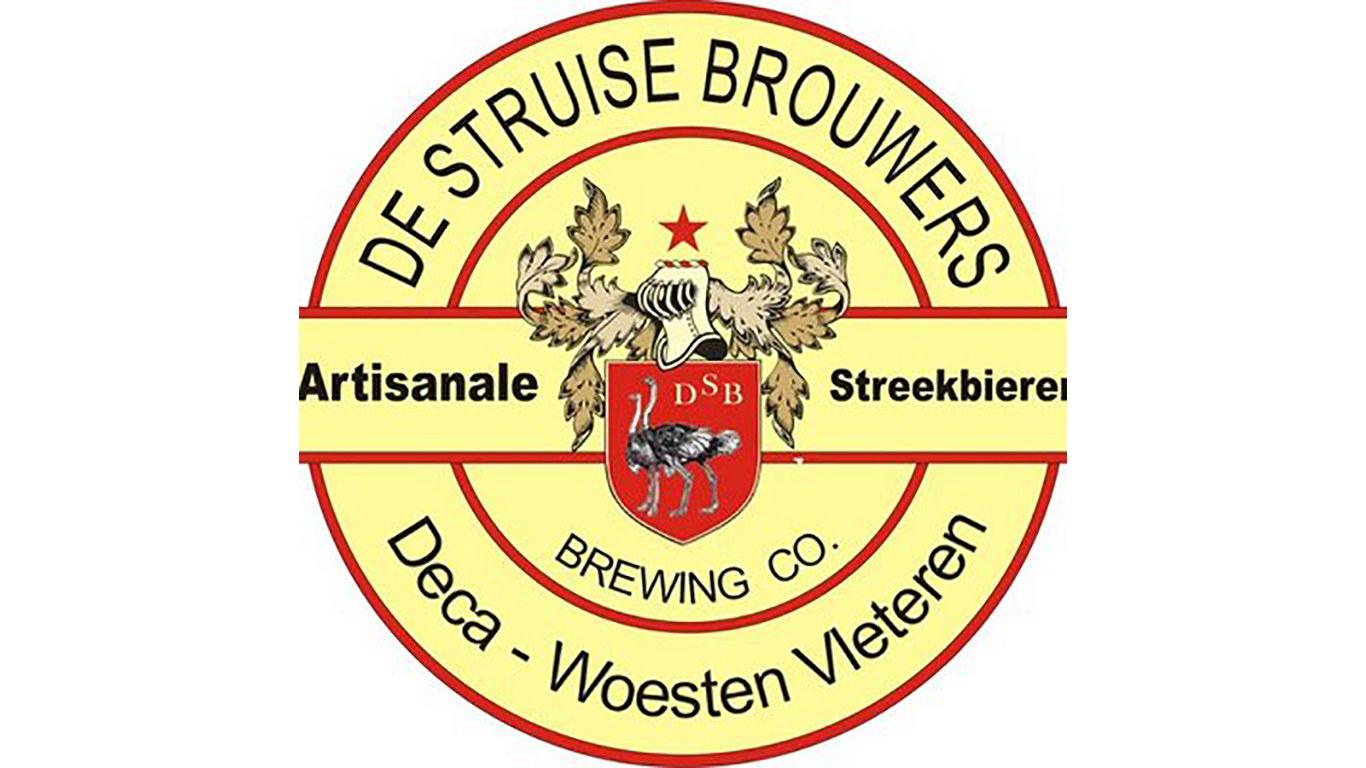
5. Black Damnation VI – Messy
> ABV: 39%
> Brewery: De Struise (Belgium)
Though some of the beers in De Struise’s Black Damnation series are available commercially, this one was never released to the public. Based on a very dark imperial stout, it is said to actually taste — unlike most other super-high-ABV brews — more like beer than whisky or brandy.
[in-text-ad]
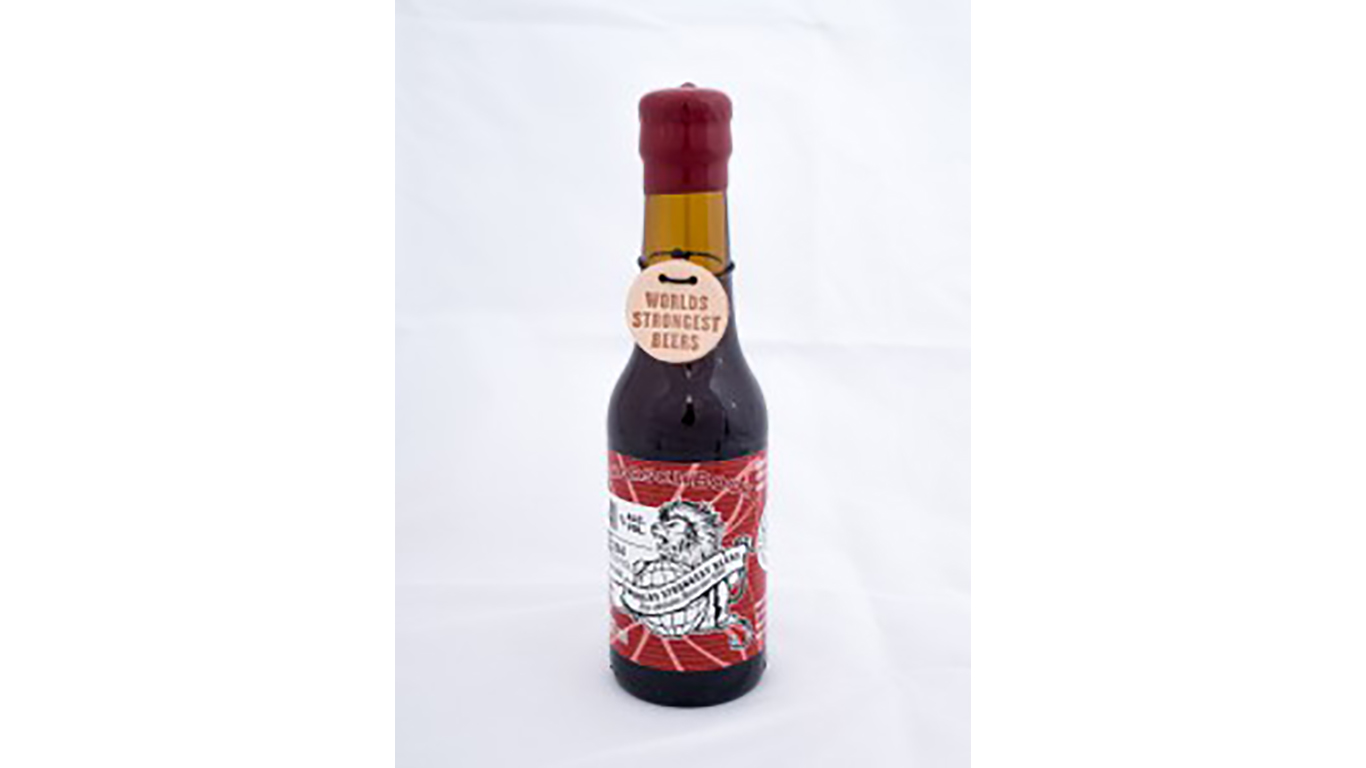
4. Schorschbock 43
> ABV: 43%
> Brewery: Schorschbräu (Germany)
A leather tag on this beer’s wax-sealed ceramic bottle reads “World’s Strongest Beer” — though it legitimately held that title only briefly. Dark golden in color, it has a hot alcoholic aroma and a flavor of malt and caramel.
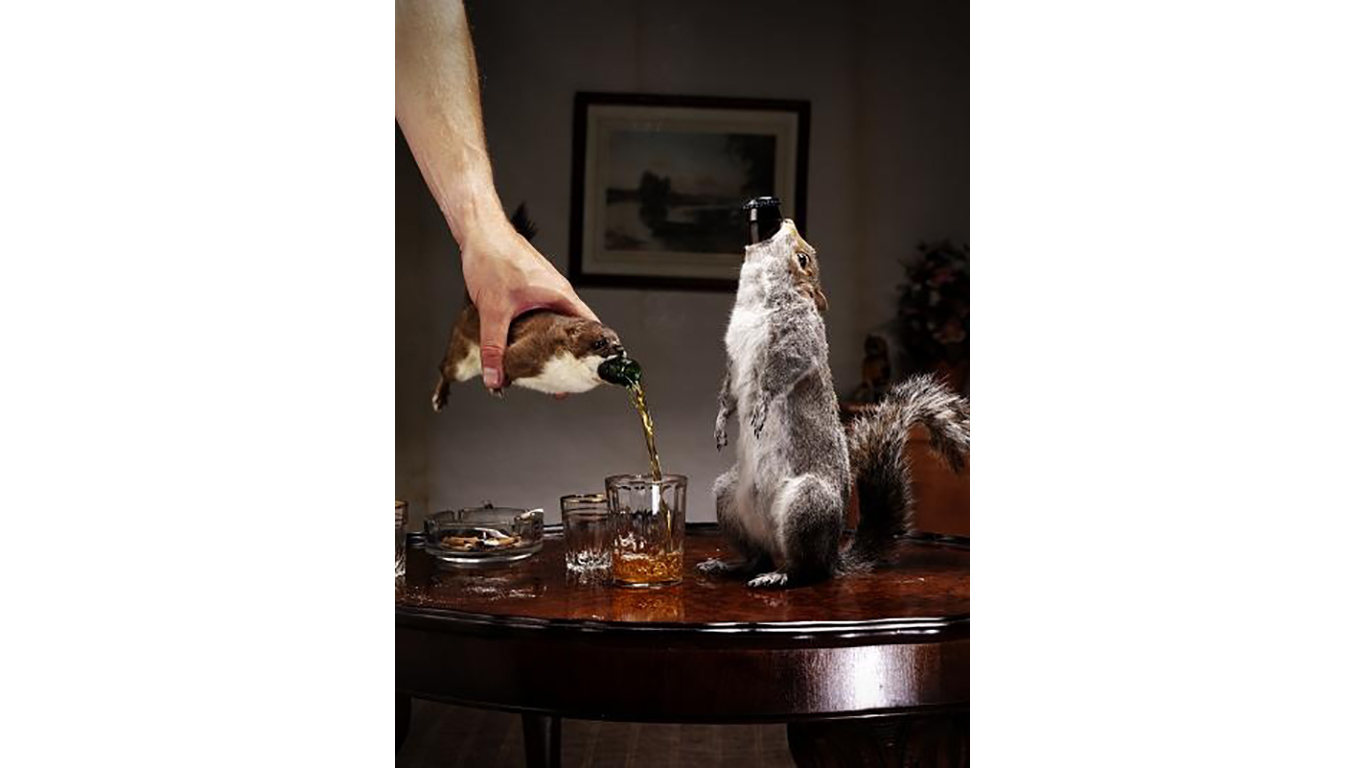
3. The End of History
> ABV: 55%
> Brewery: BrewDog (Scotland, Ohio)
The chances that you’ll ever taste this bizarre entry into the high-proof beer sweepstakes, named after a controversial 1992 book by political scientist Francis Fukuyama, are almost nil. Only a dozen bottles were made, and only 11 went on sale — at prices as high as $900 a bottle. You might not want to touch a bottle even if you did find one: It is packed into the taxidermied body of an actual squirrel. Tasters who have tried it at special events reported that it has a dark brown-orange color, a very alcoholic aroma, and suggestions of citrus and berries on the palate. One taster noted that the “flavor is horrible [with] no beer notes at all.”
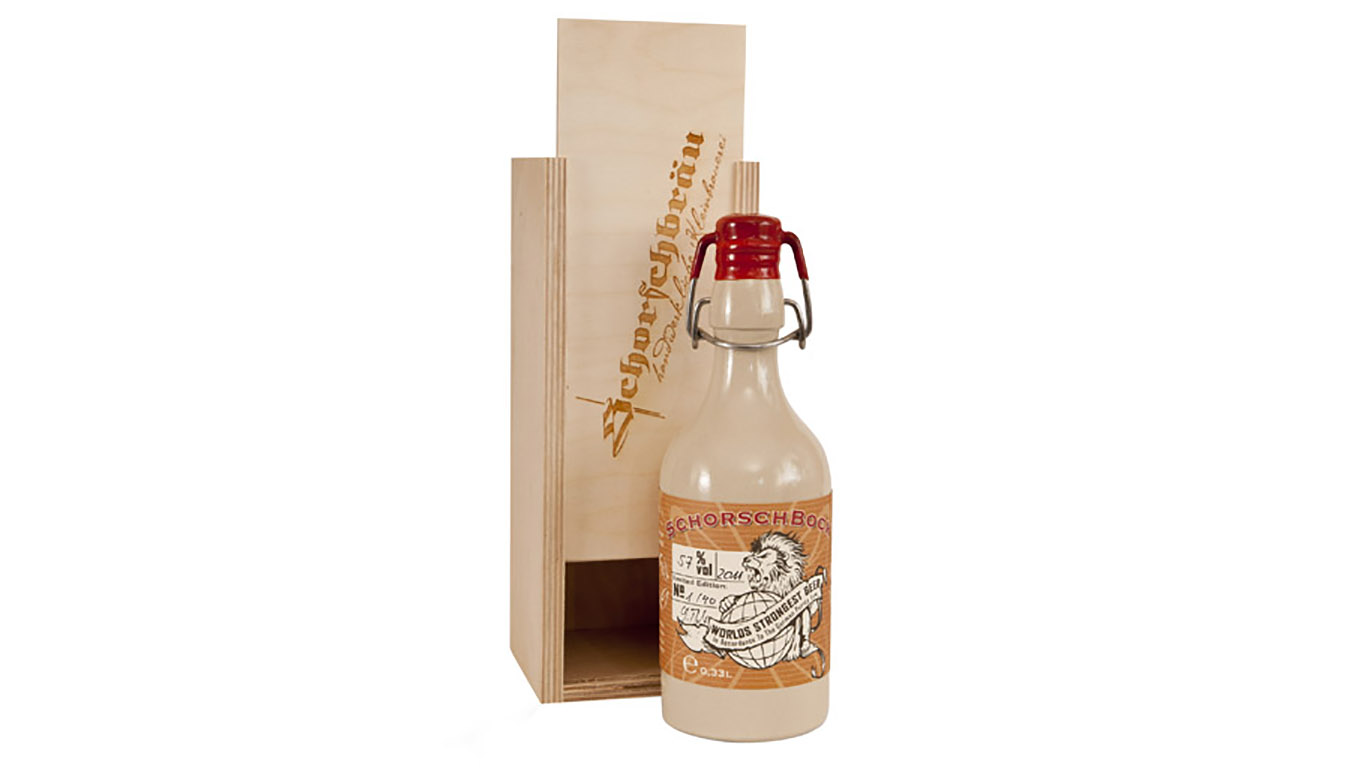
2. Schorschbock 57
ABV: 57%
Brewery: Schorschbräu (Germany)
The big, brawny brother to Schorschbrau’s Schorschbock 43, this is a harsh, vividly boozy beer with flavors of tropical fruit and a lingering sweetness. Tasters have compared it to windshield-wiper fluid and even dog food.
[in-text-ad-2]
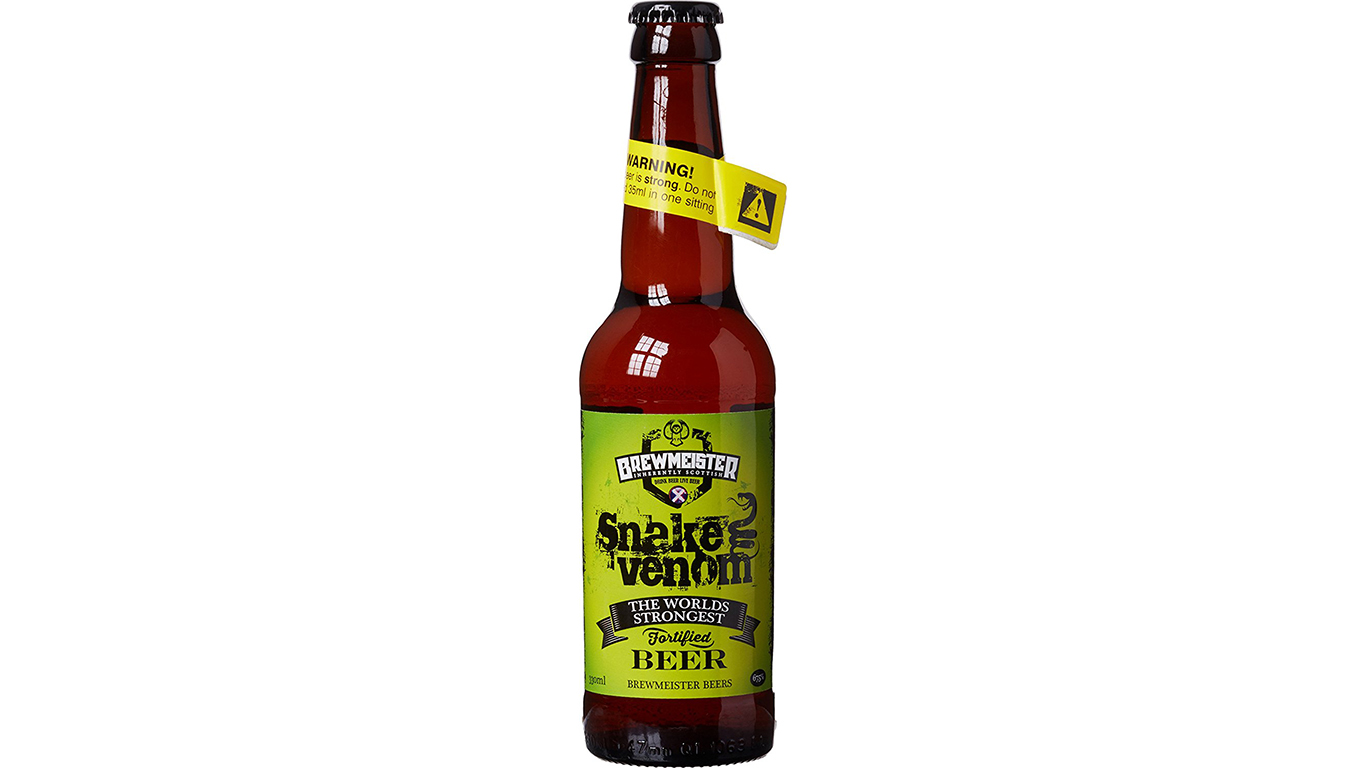
1. Snake Venom
> ABV: 67.5%
> Brewery: Brewmeister (Scotland)
Since 2013, this dangerously alcoholic brew — it far out-punches most distilled spirits in ABV — has outdone all its competitors in the strong beer battle, so far. Smoky, fiery, nutty, sweet, and almost impenetrably thick, Snake Venom is a one-of-a-kind beer, and that’s probably a very good thing.
Sponsored: Attention Savvy Investors: Speak to 3 Financial Experts – FREE
Ever wanted an extra set of eyes on an investment you’re considering? Now you can speak with up to 3 financial experts in your area for FREE. By simply
clicking here you can begin to match with financial professionals who can help guide you through the financial decisions you’re making. And the best part? The first conversation with them is free.
Click here to match with up to 3 financial pros who would be excited to help you make financial decisions.
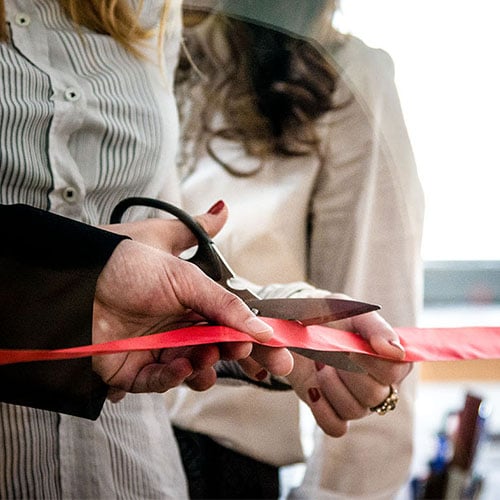 24/7 Wall St.
24/7 Wall St.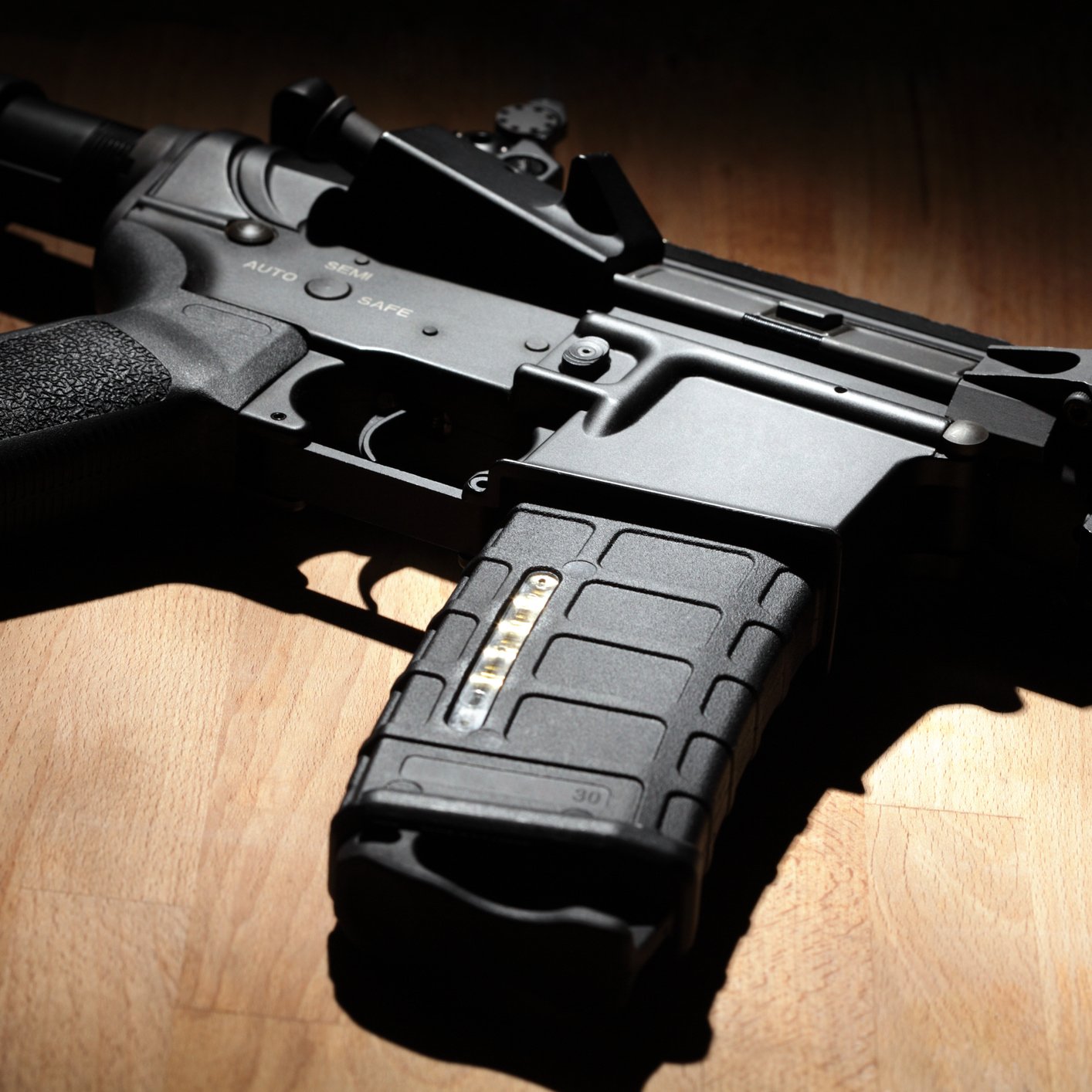 24/7 Wall St.
24/7 Wall St.